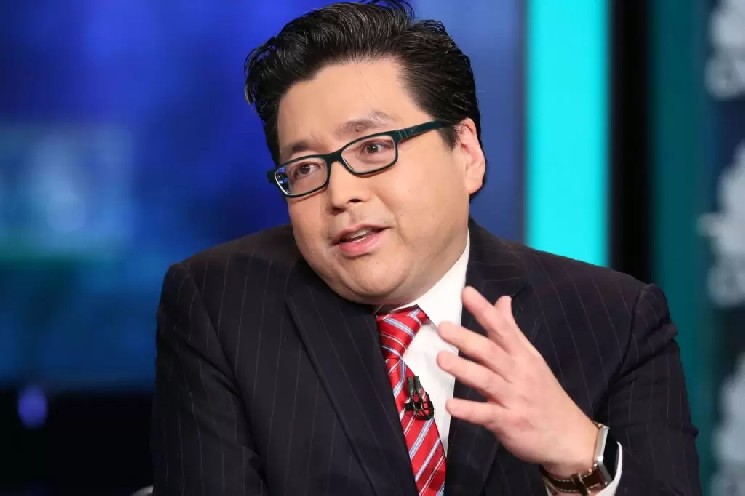(The time point of the numbers in this article is 2023.1.23. Twitter: @observerdq )
Compared with Lido/stETH, frxETH is a much more complex system.
User behavior is very dynamic, because there are free "two choices", only eat ETH2.0 pledge income, or only eat Curve LP income.
There are more variables, and the agreement party needs to manage and control "two yields" at the same time, sfrxETH pledge yield and Curve LP yield.
By regulating the "two yields", the agreement party can create "two selling points" to gain a competitive advantage in the LSD field, namely a higher pledge yield and stable anchoring.
Creating "two selling points" is costly, and the parties to the agreement may need to go through a long period of exploration to find a suitable balance of cost, scale, and income. It is still very early.
The agreement party also has a "secret weapon" to help reduce costs, which has been used proficiently in the Frax stablecoin business for a long time. With this "secret weapon", it is unrivaled in maximizing the use of Curve.
The discussion follows. The first picture above can be used as an auxiliary for the following.

“Two Choices” for Users: The Mechanism of frxETH from the User’s Perspective
Users can mint frxETH 1:1 on the official website of the agreement with ETH, but this is one-way, and frxETH cannot be redeemed for ETH through the official website. After getting frxETH, there are two places to go. First, if you become sfrxETH on the official website, you can enjoy the pledge income of ETH2.0, which is currently at the level of ~7.3%. Second, deposit into Curve frxETH/ ETH pool to eat LP income, currently at the level of ~8.5% (via Convex ). These "two yields" are exactly what the parties to the agreement need to manage and control.
By the way, let’s take a look at the current user’s choice. The user has minted ~50K frxETH in total, of which ~25K stake has become sfrxETH, and ~25K is in the Curve group LP. This is also the reason why sfrxETH's pledge yield can reach ~7.3%, because frxETH of the group LP transfers the 2.0 pledge yield of the underlying ETH assets to sfrxETH stake users.
The relationship between "two yields": Curve LP yield and sfrxETH pledge yield
The agreement party regulates the bribery intensity of Convex ( Votium ), which can affect the rate of return of Curve LP. For example, increasing the intensity of bribery will make the rate of return of Curve LP significantly higher than that of sfrxETH pledged, which will attract more frxETH to choose to be Curve LP, thereby creating a force to equalize the "two rates of return", and the increase of Curve pool TVL will lead to Curve LP's rate of return has decreased, and the proportion of frxETH that chooses to do LP has increased, which has brought about an increase in the sfrxETH pledge rate of return.
In the same way, if the bribery strength of Convex drops from the high level, the yield of Curve LP will drop sharply, which is significantly lower than the staking yield of sfrxETH, then more frxETH will choose to stake to become sfrxETH, and the force of equalizing the "two yields" will begin effect.
So I judge that these "two yields" will not deviate greatly in the long run. The core operation of the protocol party's control is the amount of Convex bribery in each period.
By regulating the "two yields", the agreement party can realize the "two selling points" and seize the LSD market share.
Dismantling "Two Selling Points": Higher ETH2.0 Pledge Yield, Stable Anchoring
One of the selling points is the staking yield that exceeds the market average.
To realize that the sfrxETH pledge yield is higher than that of peers (take stETH as an example) Delta%, it means that there must be a proportion of 1 - 1/(1+Delta%) of frxETH choosing to go to Curve Group LP.
For example, if it is to be 20% higher than the market level, then it is necessary to drive 16.6% of frxETH to choose to do LP. This means that the protocol party needs to maintain a Curve pool with用户铸造的frxETH总数量* 16.6% * 2 TVL, and the LP rate of return of this pool is also about the level of sfrxETH pledge rate of return (that is, stETH rate of return * 120 %). The Convex bribery of the agreement party needs to support this magnitude of Curve pool TVL and the corresponding level of LP yield .
To provide a proportional reference, the total circulation of stETH is nearly 5 million, and the stETH and ETH in the Curve stETH/ ETH pool are 440,000 and 310,000 respectively.
The second selling point is a stable anchor level. The main methods include: higher Curve pool A parameters, larger pool (compared to the daily net frxETH-> ETH transaction volume).
frxETH obtained the setting of Curve pool A=120 in the early stage of launch, while the A of the market leader stETH pool is only 50. The reasons behind it have not been examined in detail, but frxETH has an advantage from the very beginning.
The pool needs to be large, the main means is to increase LP yield and attract more external ETH holders to form Curve frxETH/ ETH pool LP.
It can be seen that behind the two selling points is the bribe cost of maintaining a large Curve pool TVL and LP yield, and if the sfrxETH pledge yield is higher, the cost will be doubled (Curve pool TVL, LP yield double increase ).
I think that for a long period of time in the future, the parties to the agreement will need to continue to explore and find a balance between acceptable bribery costs and a satisfactory increase in market share.
Finally, we need to mention the "secret weapon" of the agreement party, which can help the agreement party reduce the cost of bribery.
"Secret Weapon": frxETH minted "out of thin air"
The protocol party can mint frxETH "out of thin air". For the agreement party, it is not necessary to go through the conventional process of casting frxETH with ETH, but can directly call the frxETH contract to cast frxETH "out of thin air". As long as these frxETH belong to the agreement and do not directly enter the circulation, there will be no problems. In fact, in the Frax stablecoin business, the main circulation comes from this casting model. I have an old article to analyze it.
Let's take a look at frxETH's balance sheet , which will also help us understand this matter.

The debt column shows 57K frxETH, but in fact, the ETH deposited by the user is only ~50K, and nearly 6K is minted "out of thin air" by the agreement party, and this 6K is lying in the treasury item in the asset column of frxETH. "Out of thin air" casting and holding, corresponding to the balance sheet, means that both ends of assets/liabilities increase the corresponding amount simultaneously, and there is no problem.
The ~6K figure I mentioned above cannot be found directly in the balance sheet, because the agreement party left another ~3.6K ETH, which was also deposited in the Curve pool. Let's take a look at the composition of the Curve pool, it will be clearer.

It can be seen that the protocol party minted 5.7K ETH"out of thin air", and the ~3.6K ETH that was not invested in ETH2.0 were all formed as LPs in Curve. The agreement party currently owns ~15% of the entire Curve pool, which means that 15% of the LP income will be collected by the agreement party, thereby diluting the agreement party's Convex bribery cost (meaning left pocket into right pocket).
This is the meaning of this "secret weapon", by casting frxETH "out of thin air" and depositing it in the Curve pool, reducing the cost of Convex bribery.
I imagined a simplified scenario to illustrate this effect more clearly.
In this scenario, frxETH only creates one core selling point, which is stable anchoring. The frxETH in the Curve pool is all minted "out of thin air" by the protocol party, and ETH comes from external users. All the frxETH minted by users will be staked into sfrxETH, which also means that in ETH2.0 pledge, the sfrxETH pledge yield is only the market average.
At this time, the agreement party can take half of the LP income, which greatly reduces the cost of bribery. If you consider that the ROI of Convex bribes is often > 1, and sometimes exceeds 2, this may even be a costless operation . I will not expand here. I have calculated the ROI of two Convex bribes in history. If you are interested, you can refer to it. Of course, this is a simplified ideal situation, which cannot exist in reality, because the protocol party cannot prevent frxETH users from depositing into Curve group LP.
Casting frxETH "out of thin air" has another significance, which is to help dynamically regulate the balance of the Curve pool. When the net transaction volume of frxETH -> ETH suddenly increases, resulting in an imbalance in the pool, the protocol party can maintain the balance of the pool by withdrawing frxETH from the pool and destroying it.
Conclusion: a complex system that is difficult to predict the trend
frxETH is a very complex system, and it is still in a very early stage. The scale of frxETH is only ~1% of that of stETH.
At present, we can only infer the possible breaking point of frxETH in a very general way, and we can roughly feel the advantages of frxETH in Curve's ecological cost, but there are quite a lot of unknowns in the market. Just list three or four, and the marginal effect of increasing the level of pledge yield how is it How big is the impact of the lack of trust brought about by the weaker brand power than the leader, and how long will it take to make up for it? How big is the lack of leveraged staking tools? In terms of cost, is Convex's high bribery sustainable?
Not to mention the new variables after Shanghai's upgrade, it is difficult to predict how long the team will withdraw from staking, and this has an important impact on the management of Curve pool.
The big show has just begun, let's go and watch.






